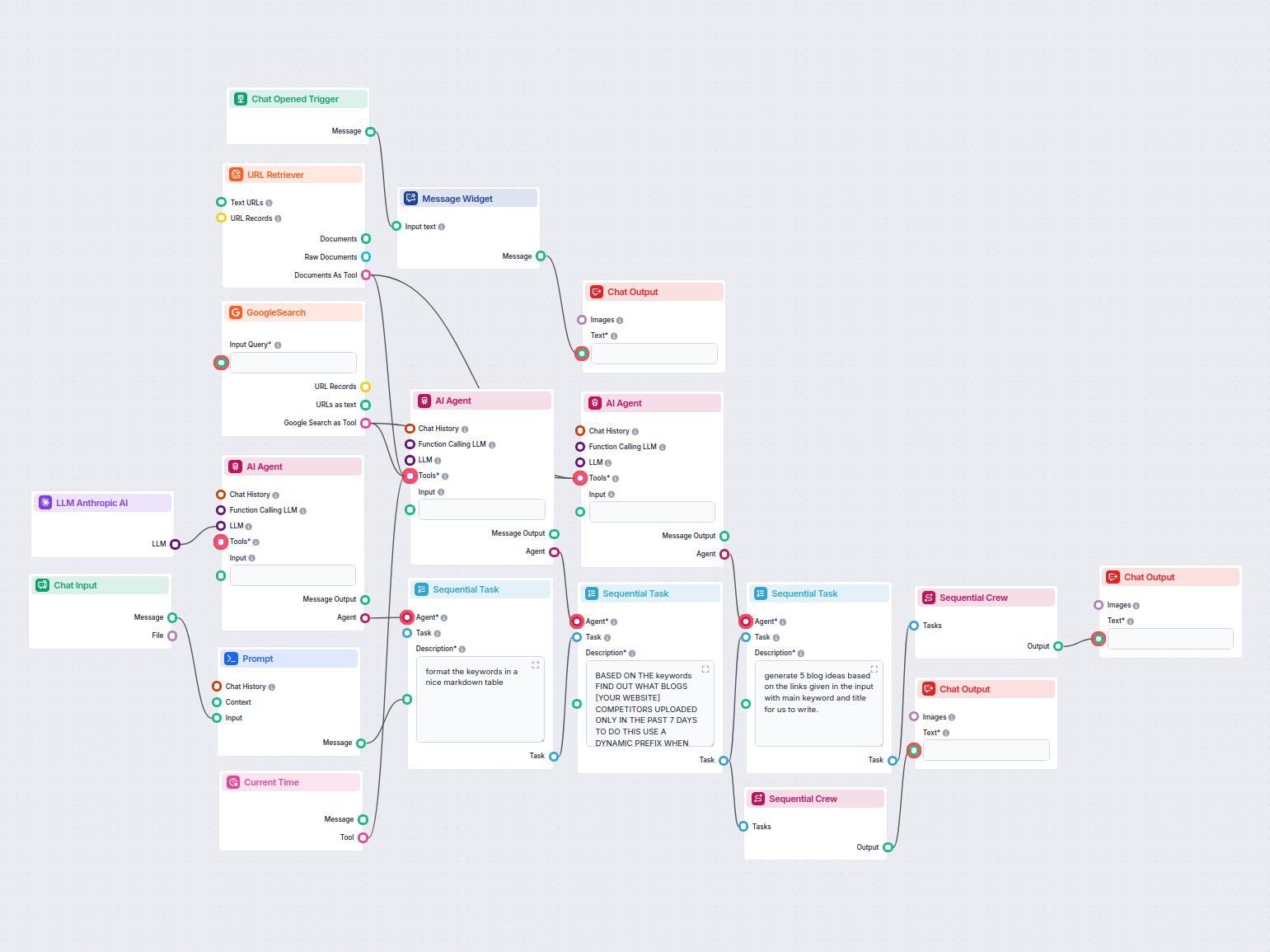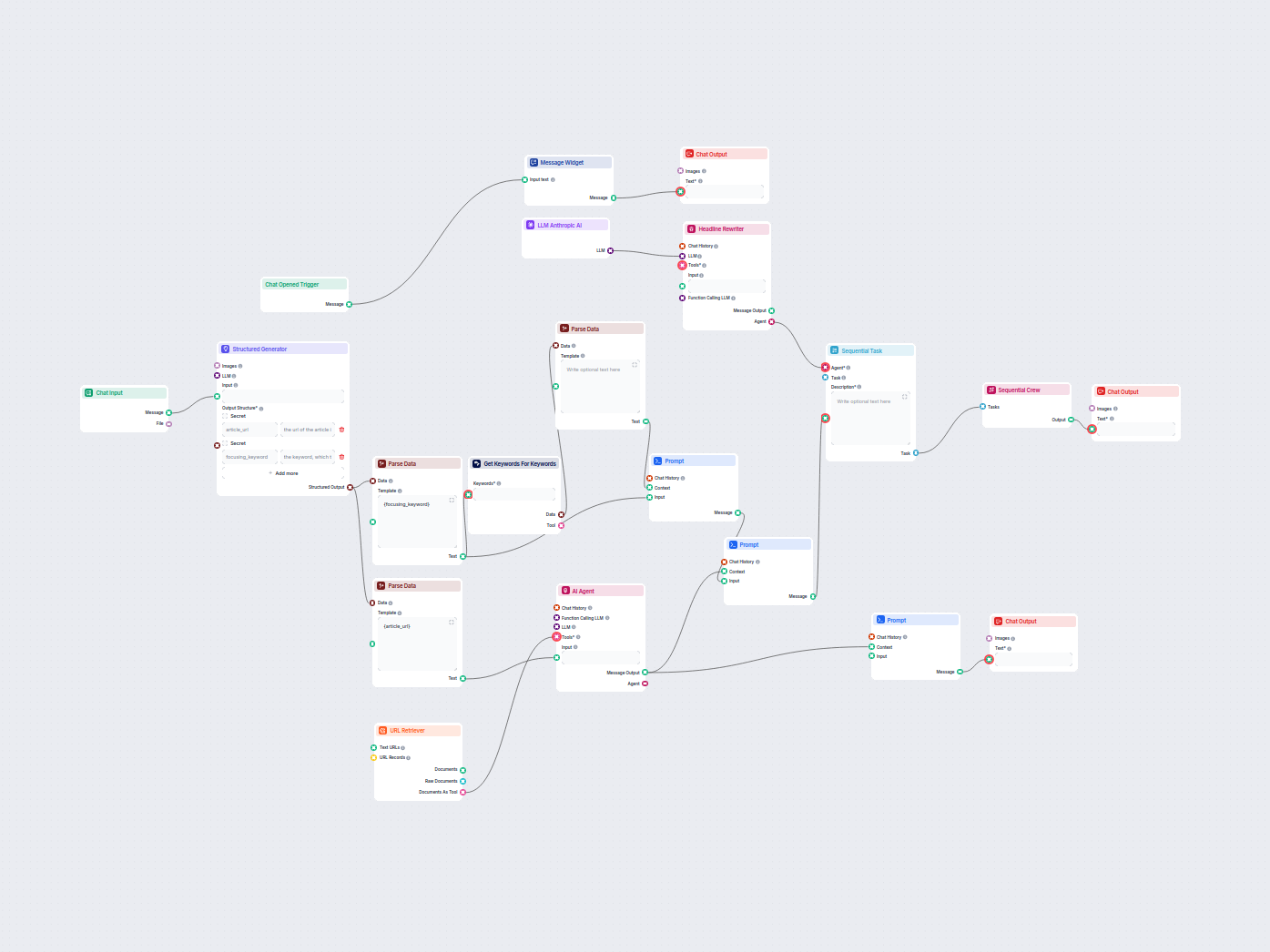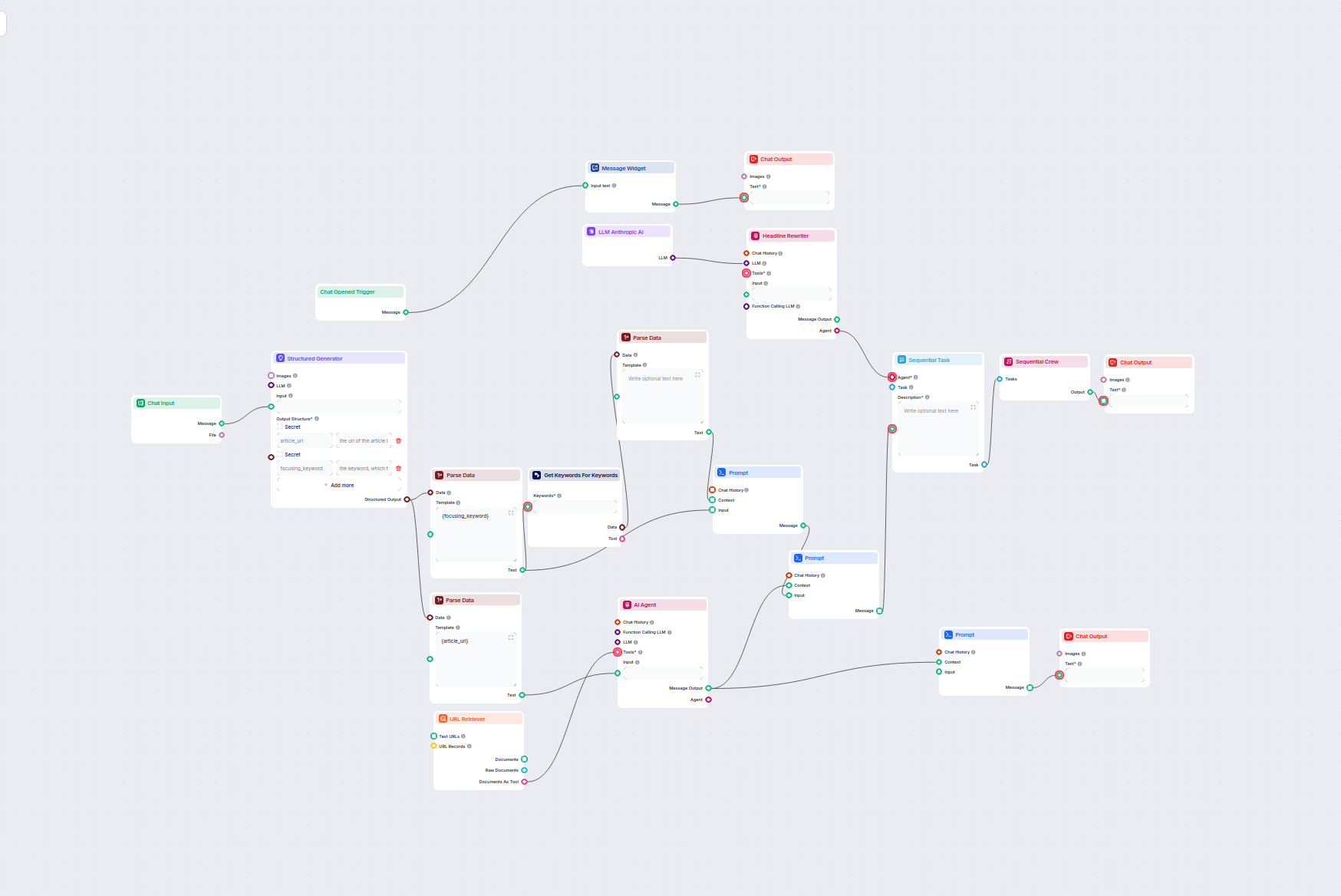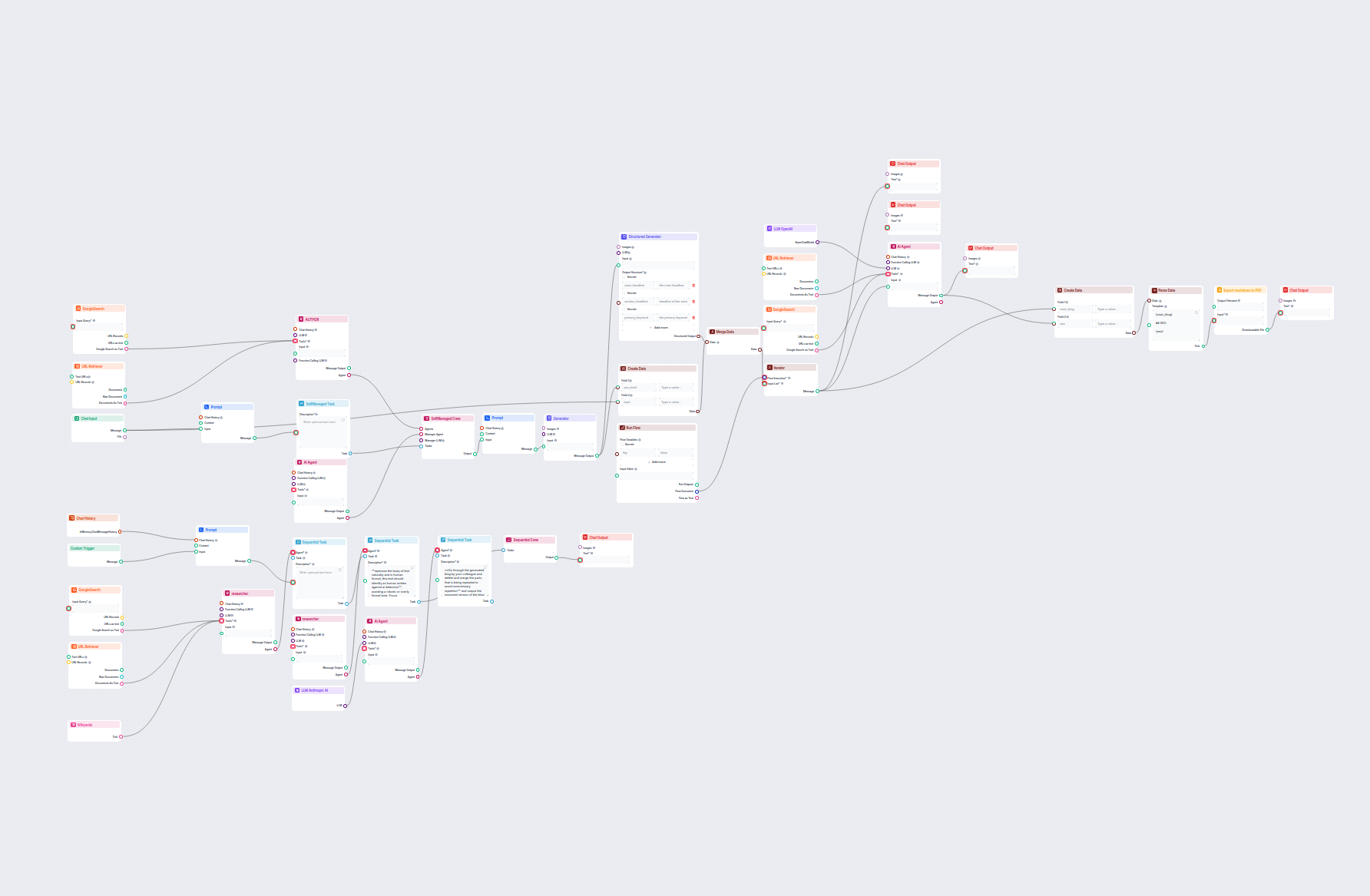AI Agent: Competitor Blog Finder
Agent with a prompt to find blog titles from competitor websites uploaded in the past 7 days, using Google search with a dynamic date prefix.
Automatically analyze top-ranking competitor blogs from the past week and generate new blog ideas for your website. This AI workflow researches competitor content, formats keyword data into reports, and suggests fresh, SEO-friendly blog topics tailored to your niche.

Flows
Agent with a prompt to find blog titles from competitor websites uploaded in the past 7 days, using Google search with a dynamic date prefix.
Agent with a prompt to create a markdown table of all provided keyword data.
Task prompt instructing to format keywords in a markdown table.
Task prompt instructing to find blogs uploaded by competitors in the past 7 days using a dynamic Google date prefix.
Task prompt instructing to generate 5 blog ideas based on input links, with main keyword and title.
Prompt template suggesting relevant keywords based on the content and features of the website.
Below is a complete list of all components used in this flow to achieve its functionality. Components are the building blocks of every AI Flow. They allow you to create complex interactions and automate tasks by connecting various functionalities. Each component serves a specific purpose, such as handling user input, processing data, or integrating with external services.
The Chat Input component in FlowHunt initiates user interactions by capturing messages from the Playground. It serves as the starting point for flows, enabling the workflow to process both text and file-based inputs.
Learn how FlowHunt's Prompt component lets you define your AI bot’s role and behavior, ensuring relevant, personalized responses. Customize prompts and templates for effective, context-aware chatbot flows.
FlowHunt supports dozens of AI models, including Claude models by Anthropic. Learn how to use Claude in your AI tools and chatbots with customizable settings for tailored responses.
The AI Agent component in FlowHunt empowers your workflows with autonomous decision-making and tool-using capabilities. It leverages large language models and connects to various tools to solve tasks, follow goals, and provide intelligent responses. Ideal for building advanced automations and interactive AI solutions.
Unlock web content in your workflows with the URL Retriever component. Effortlessly extract and process the text and metadata from any list of URLs—including web articles, documents, and more. Supports advanced options like OCR for images, selective metadata extraction, and customizable caching, making it ideal for building knowledge-rich AI flows and automations.
FlowHunt's GoogleSearch component enhances chatbot accuracy using Retrieval-Augmented Generation (RAG) to access up-to-date knowledge from Google. Control results with options like language, country, and query prefixes for precise and relevant outputs.
The Sequential Task component organizes workflow steps by defining a clear task description, expected output, and assigning an agent to execute the task. Ideal for structured, multi-step processes, it ensures each step is well-documented and assigned, supporting complex automations in FlowHunt.
Experience organized workflow automation with the Sequential Crew component in FlowHunt. This component allows you to group multiple agent tasks and execute them one after another, making it ideal for processes that require clear, step-by-step task processing.
Discover the Chat Output component in FlowHunt—finalize chatbot responses with flexible, multi-part outputs. Essential for seamless flow completion and creating advanced, interactive AI chatbots.
The Message Widget component displays custom messages within your workflow. Ideal for welcoming users, providing instructions, or showing any important information, it supports Markdown formatting and can be set to appear only once per session.
Flow description
This workflow is designed to automate the process of analyzing top-ranking competitor blogs and generating new blog post ideas tailored to your business’s focus keywords. By leveraging AI agents, live search, and automated formatting, the workflow streamlines a sequence that would otherwise require manual research, content analysis, and creative brainstorming.
after:[YYYY-MM-DD] search operator).| Step | Component | Functionality |
|---|---|---|
| 1 | Chat Input/Welcome Message | Collects focus keywords from user |
| 2 | Prompt Template & AI Formatter | Formats and presents keywords in markdown table |
| 3 | Current Date Tool | Ensures up-to-date time context for searches |
| 4 | Google Search & URL Retriever | Finds competitor posts from last 7 days, extracts content |
| 5 | Research AI Agent | Identifies recent competitor blog titles and URLs |
| 6 | Ideation AI Agent | Suggests 5 blog ideas with main keywords and titles |
| 7 | Sequential Crew | Manages stepwise execution and data flow |
| 8 | Chat Output | Presents all results to the user |
With this workflow, you can consistently generate relevant, data-backed blog ideas based on real-time competitor activity, all with minimal manual effort and maximum automation.
We help companies like yours to develop smart chatbots, MCP Servers, AI tools or other types of AI automation to replace human in repetitive tasks in your organization.
Automatically optimize your article's headlines and title for a specific keyword or keyword cluster to improve SEO performance. This workflow analyzes your arti...
This AI-powered workflow finds the best SEO keywords for your blog article and automatically rewrites headlines to target those keywords, improving your content...
Generate comprehensive, SEO-optimized blog posts with advanced structure and high word count using multiple AI agents. The workflow includes automated research,...
Cookie Consent
We use cookies to enhance your browsing experience and analyze our traffic. See our privacy policy.



